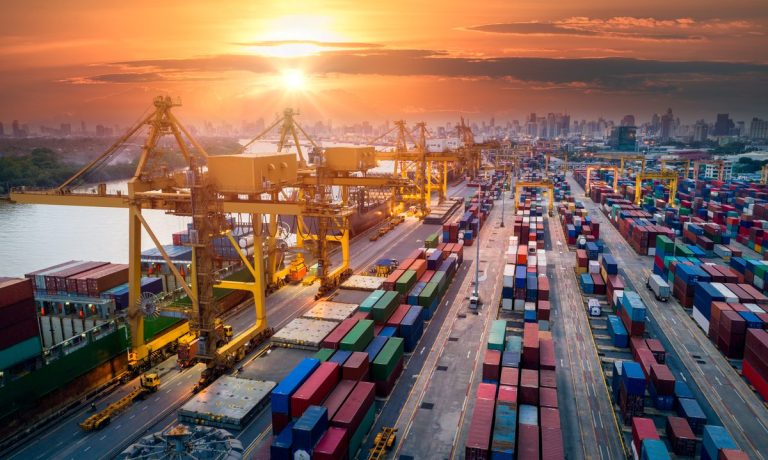
When it comes to controlling for what’s controllable, supply chain resilience is top of mind.
After all, against the backdrop of today’s shifting and dynamic operating environment, the enterprise focus will need to shift from viewing supply chains as cost centers to recognizing them as strategic assets.
Managing for risk and uncertainty by tapping digital innovation was the theme of Tuesday’s (Sept. 10) “Supply Chain Summit” hosted by the U.S. Department of Commerce and the Council on Foreign Relations.
Across over half a dozen sessions, leading voices from the private sector, government and academia came together to unpack how, within an era marked by geopolitical tensions, pandemic-induced disruptions and rapid technological advancements, the stability and resilience of supply chains have never been more critical to both national and global economies.
And throughout panels with titles like, “How the Private Sector Evaluates Supply Chain Risk,” “A Proactive and Strategic Approach to Supply Chain Resilience,” “Ensuring U.S. Competitiveness by Securing Emerging Technology Supply Chains” and “Responding to Disruption,” experts stressed that when it comes to supply chain strength, as in anything else, data is power.
Having the best supply chain requires having the most comprehensive data. By embracing redundancy, technology and collaboration, supply chains can become more resilient, agile and equipped to handle whatever challenges lie ahead, panelists said.
Read more: Embedded Finance and the Great Supply Chain Reset
Supply chain risk management is a complex balancing act for private-sector companies, involving multiple stakeholders and shifting variables. During the panel on “How the Private Sector Evaluates Supply Chain Risk,” speakers emphasized the importance of mapping supply chains to gain end-to-end visibility, a task that has become more challenging with the increasing globalization and complexity of networks.
The process of supplier risk assessment, traditionally focused on financial and operational criteria, is now evolving to include geopolitical risk, sustainability factors and cybersecurity threats.
In response, Commerce Department Secretary Gina Raimondo announced Tuesday the department is releasing a new tool, called SCALE, which will assess supply chain risk across U.S. goods and economy.
July PYMNTS Intelligence revealed that concerns over supply chain integrity and macroeconomic conditions highlight how larger external factors also remain on CFOs’ radars.
Cybersecurity risks were another central topic, with panelists warning that as supply chains become more digitized, they are more vulnerable to cyberattacks. Companies are investing in new technologies to bolster cybersecurity throughout their supplier networks, with some leveraging blockchain to increase transparency and secure transactions.
See also: Halftime Report: 18 Payments Executives Share The Issues That Will Define The Rest of 2024
Building resilience into supply chains requires more than just reactive measures; it necessitates a proactive, long-term strategy.
A central theme of Tuesday’s discussions was the need for strategic redundancy in supply chains, a concept where companies intentionally build backup suppliers, logistical routes and production facilities. Panelists argued that while redundancy may come with increased short-term costs, it provides essential insurance against unexpected disruptions.
“The integration of AI [artificial intelligence], ML [machine learning], and vast computing power, coupled with an abundance of data, has transformed our approach to demand forecasting, inventory flow and cost optimization,” Parvez Musani, SVP, end-to-end fulfillment, Walmart U.S. Omni Platforms and Tech, told PYMNTS. “Customers who can count on you during challenging times will reward you with their continued business. … Businesses must be able to adjust to disruptions quickly.”
Predictive modeling, powered by real-time data, allows companies to anticipate risks such as transportation delays, supplier bankruptcies, or even environmental changes that could threaten supply lines. Panelists emphasized the importance of agility and real-time responsiveness. Companies that can quickly pivot in response to disruption — by rerouting shipments, finding alternative suppliers or adjusting production schedules — are better positioned to weather crises.
Supply chain finance was also identified as a key area where improvements are needed. Panelists pointed out that disruptions can strain liquidity for businesses, particularly smaller suppliers. Enhancing access to working capital through digital platforms, dynamic discounting and other financial tools can ensure the stability of supply chains during turbulent times.
Access to capital is critical, especially for smaller players in the supply chain who may not have the same level of resilience as larger firms, and PYMNTS last month analyzed how businesses in the transportation, shipping and logistics sector are turning to technologies like embedded supply chain finance to enhance resilience, drive efficiency, and ultimately transform their operations.